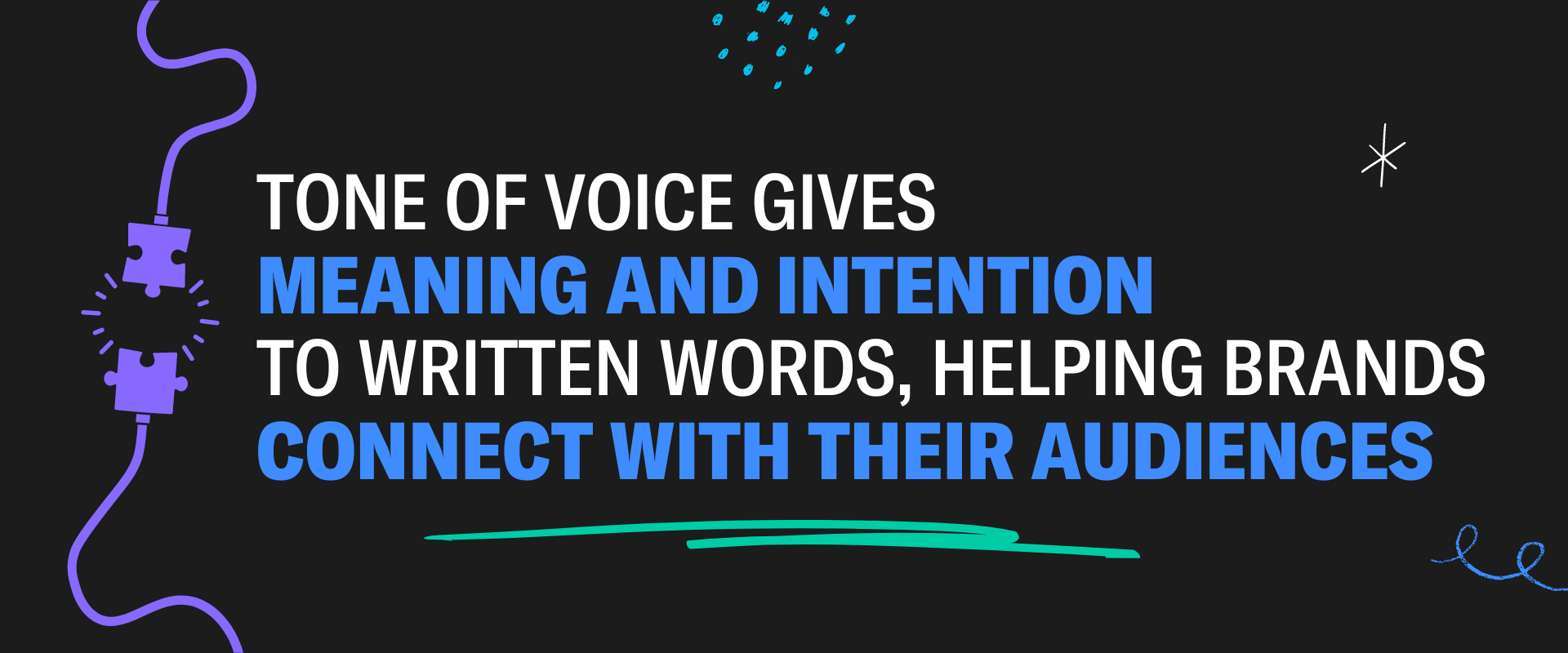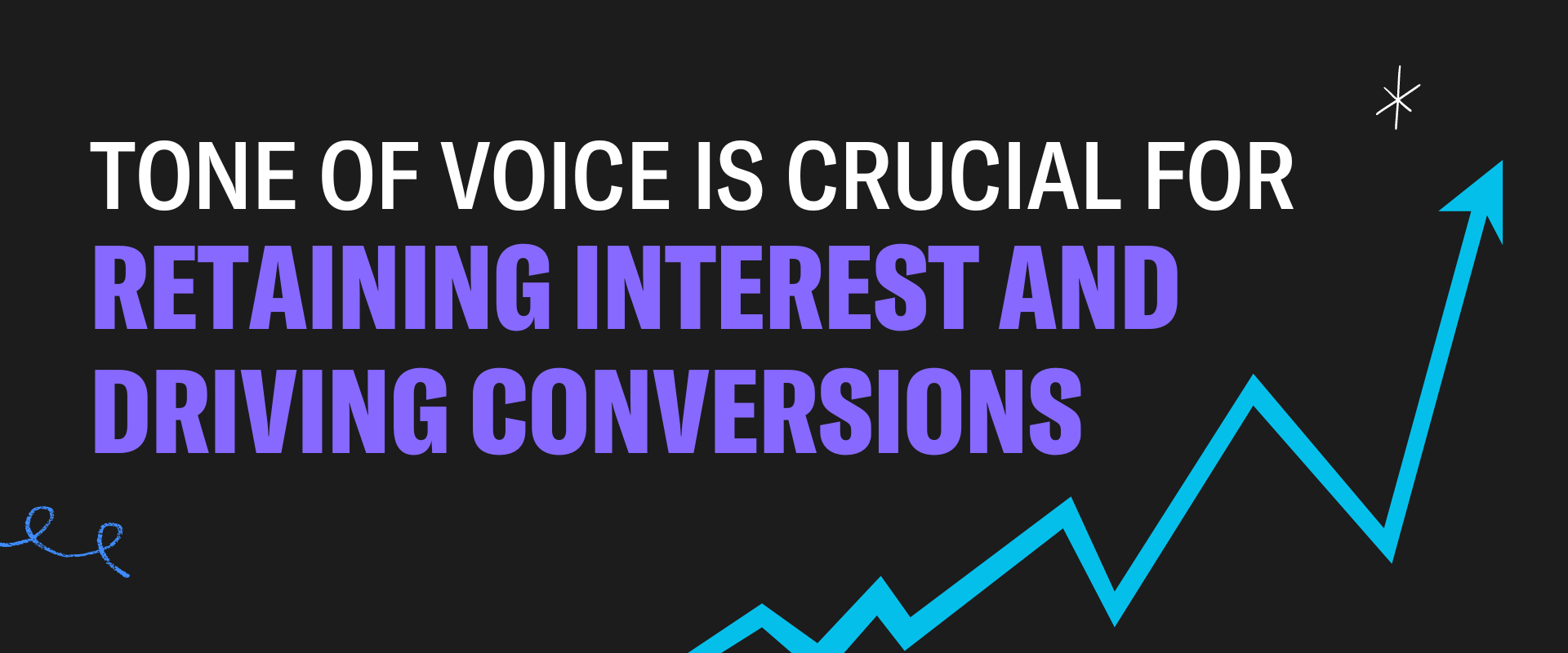Welcome back to Part Two of our SEO Essentials series! If you haven’t read Part One yet (well you absolutely should go and do that), we talked about how to reach your audience with keyword research, optimisation for voice search queries and utilising AI to keep your content funky-fresh.
Now, in Part Two, we'll focus on something equally important for engaging your audience and building trust – your tone of voice.
What is ‘Tone of Voice’?
Google rewards valuable and helpful content. However, it's not just about what you say but also how you say it – this is where tone of voice comes into play.
Tone of voice gives meaning and intention to written words, helping brands connect with their audiences. In face-to-face conversations, we have the advantage of cues like speech inflexion, facial expressions, and body language to help us better understand each other. With written communication, capturing these nuances is trickier.

That's where techniques such as using formal and informal language, humour, punctuation, and even emojis can come into play – adding implied meaning and subtext to words, where appropriate. If executed incorrectly, the text can feel flat, abrupt, or even be misconstrued and offensive. The tone of voice can ultimately make or break your content.
A Way to Build Your Brand
Tone of voice is an opportunity to define your brand, creating a distinct voice that resonates with the customer. Understand the brand values and let this shape the words, phrases and writing style.
Imagine your brand as a person – how would they speak? Would they talk like a friend, cracking jokes and using slang? Or would they maintain a serious and information-focused demeanour? Every word should feel like a natural extension of your brand's identity, resonating authentically with your audience. By maintaining an appropriate and consistent tone across all touchpoints - whether that be across on-page copy, printed materials, or social media - you can build familiarity, recognition, and loyalty with new and existing customers alike. A cohesive tone of voice allows your brand's personality to shine through consistently.
Tone of Voice Examples
A brand's tone of voice can set it apart from competitors in the same industry. Take the finance sector, for instance. Trust and reliability are non-negotiable for customers deciding where to bank their hard-earned money. Yet, an overly formal, corporate tone riddled with jargon can inadvertently distance customers from the brand.
Below are examples of two leading companies in the finance sector, both offering reliable banking in different ways. Each uses their tone of voice to connect with customers and reinforce their brand in their own ways.
Lloyd’s Bank:
As a longstanding traditional bank, Lloyds Bank leans into its 250-year heritage, emphasising its stability, loyalty and continuous customer service. To reflect this, its tone of voice is calm, confident, empathetic and reassuring, focused on building emotional connections and demonstrating unwavering security and support.
Monzo:
In contrast, Monzo set out to disrupt traditional banking with its user-friendly app. Reflecting this innovative spirit, its tone of voice is refreshingly fun, transparent, and welcoming, often sprinkled with emojis and devoid of stiff corporate jargon.
Monzo’s Tone of Voice Guide highlights the importance of natural, spoken language, showing how to replace formal words with simpler alternatives. This tone of voice reinforces the easy, accessible, approachable ambitions of the bank.
How Tone of Voice can help your SEO 🤝
While tone of voice is a great chance to showcase clever and engaging copy that reflects a brand's personality, its importance goes beyond flexing your writing skills. Prioritising tone of voice can enhance your overall SEO efforts. Here’s how.
Create content for humans, not just search engines.
A human feeling counts a lot in the eyes of Google, especially in the age of artificial intelligence and the increase in spammy, AI-generated content. By using a clear, easy-to-digest tone of voice, you can deliver content in an authentic and genuinely helpful way.
Demonstrate E-E-A-T
Google uses the criteria of Experience, Expertise, Authoritativeness, and Trustworthiness (E-E-A-T) to evaluate the credibility and relevance of web pages. While these factors aren't direct ranking signals, they impact a page's ranking potential and are a good framework for producing quality content.
Tone of voice is particularly useful for boosting the trustworthiness element of E-E-A-T. When content resonates as authentic and relatable, it inherently encourages trust among users. Also, a well-crafted tone of voice can seamlessly incorporate targeted keywords, preventing bad SEO practices like keyword stuffing, which can compromise integrity.
Remember that consistency is crucial. When your messaging lacks the coherence or consistency your customers expect, it can weaken the brand trust you’ve worked so hard to build.
Encourage Engagement
After investing time in strategy and selecting keywords to drive users to your page, you should ensure the space they land in is informative and on-brand. Tone of voice is crucial for retaining interest and driving conversions.

Similar to how a dull, monotonous voice can bore an audience during a presentation, uninspired content can make visitors lose interest and seek alternatives, resulting in high bounce rates. However, if your content is engaging and informative, users are more likely to explore, click through links, and spend more time on your site. Visitors are also more likely to remember your brand, return to your site, or share your content and increase site traffic.
Below are some handy tone-of-voice techniques to help boost action and maximise engagement.
Clear Calls to Action:
Incorporating call-to-action phrases such as ‘Sign up now’, ‘Click here to buy’ or ‘Join us today’ into content helps to inspire and guide users on what steps to take next.
Active Voice:
Using the active voice, rather than the passive voice, injects energy into your words and makes for more inspiring content. For example:
Passive: ‘Connection is revolutionised by our new smartphone.’
Vs.
Active: ‘Our new smartphone revolutionises connection.’
The active voice feels direct, conveys immediacy and emphasises action, making it more impactful and engaging.
To wrap it all up
We know, we just gave you a lot of stuff to consider. But overall, a solid SEO strategy and informative, engaging, human-centric content go hand in hand. After all, the goal is not only to impress the search engines but to captivate customers too.
Thorough keyword research, voice search optimisation, and leveraging AI are key for ensuring your content is discoverable and remains fresh. However, once users land on your page, it's your tone of voice that will make the difference in keeping them engaged.
A well-defined tone allows you to forge an authentic connection with your audience, aligning your brand's personality and values with the way you communicate. Mastering both the science of SEO and the art of tone of voice enables you to create a cohesive content experience that search engines reward and audiences appreciate.

March 27, 2024